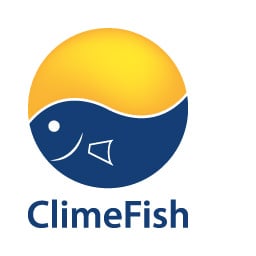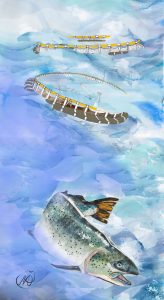Northeast Atlantic Aquaculture

Main results
- Salmon are vulnerable to temperature increase due to thermal limitations. In some Norwegian regions, temperature already exceeds the thermal optima for salmon aquaculture, and the industry in these regions will be especially vulnerable to extreme events, such as heat waves
- The diversity of farming sites makes it difficult to generalize possible adaptation strategies, thus, in order to make functional adaptation plans, local environmental conditions and farming strategies must be considered
- Knowledge gaps linked to environmental data, salmon biology and aquaculture production includes combined effects of climate drivers and stressors on biological performance, climate projections with higher resolution that focus on the coastal areas and new technology
Effects of climate change
Farmed salmon held in sea cages have limited possibilities to migrate from environmental changes. Thus, environmental effects directly affect the fish performance. Periods with seawater temperatures above the optimum for growth has been shown to result in reduced appetite and growth, increased mortality and disease problems in the intensive farming of salmon. Changes in temperature may further affect the site production, the spreading, distribution and severity of diseases and outbreaks, and the oxygen level and carrying capacity of the environment. Climate changes other than temperature are less studied and vast knowledge gaps need to be filled.
Risks and opportunities
Risks associated with climate change and salmon aquaculture production include reduced product quality, impaired welfare, increased occurrence of diseases and increased mortality. Higher temperatures may have the potential to promote fish growth and increase the production capacity at a farm level. However, the possible opportunities are seen mostly in the northern part of the Northeast Atlantic and they have a small impact compared to the impacts associated with risk and reduced production overall.
Adaptation strategies
Industry and policymakers can develop and implement adaptation measures to maximize opportunities and minimize risks rising from climate change. However, decisions must be evidence-based, with detailed information on how the environmental changes affect aquaculture as well as future climate projections. Preventive measures and adaptation strategies take time to develop and implement, and their relevance and effectiveness will depend on the conditions at the farms. Adaptation strategies includes the involvement from three different sectors:
- Industry: Short-term and long-term implementation of adaptation strategies for adapting to changing farming conditions, including new technology, breeding programs, feeding strategies and improved monitoring of environmental parameters and fish health
- Policy: For implementation of adaptation plans and development of a more flexible regulatory and licensing framework allowing for changing strategies, e.g. relocation of production sites and registration of diseases and outbreaks
- Research: To address the knowledge gaps identified. For instance, research on the biological thresholds and limitations of salmon in response to climate change, in addition to better climate models and monitoring of environmental conditions to understand how the climate is changing in the regions where farming takes place
Socio-economic outcomes
Socio-economic impacts include how individual aquaculture farms or companies experience changes in costs or benefits and how this might impact the whole aquaculture industry in a region or nationally. How other actors and interests can be directly affected given the other impacts, including the authorities that need to regulate industries, societal and environmental impacts and risks are also included in this analysis. Socio-economic outcomes are however difficult to calculate based on existing knowledge and changing technology, and this is one of the challenges considered in ClimeFish.

Photo: Fiskeridirektoratet



